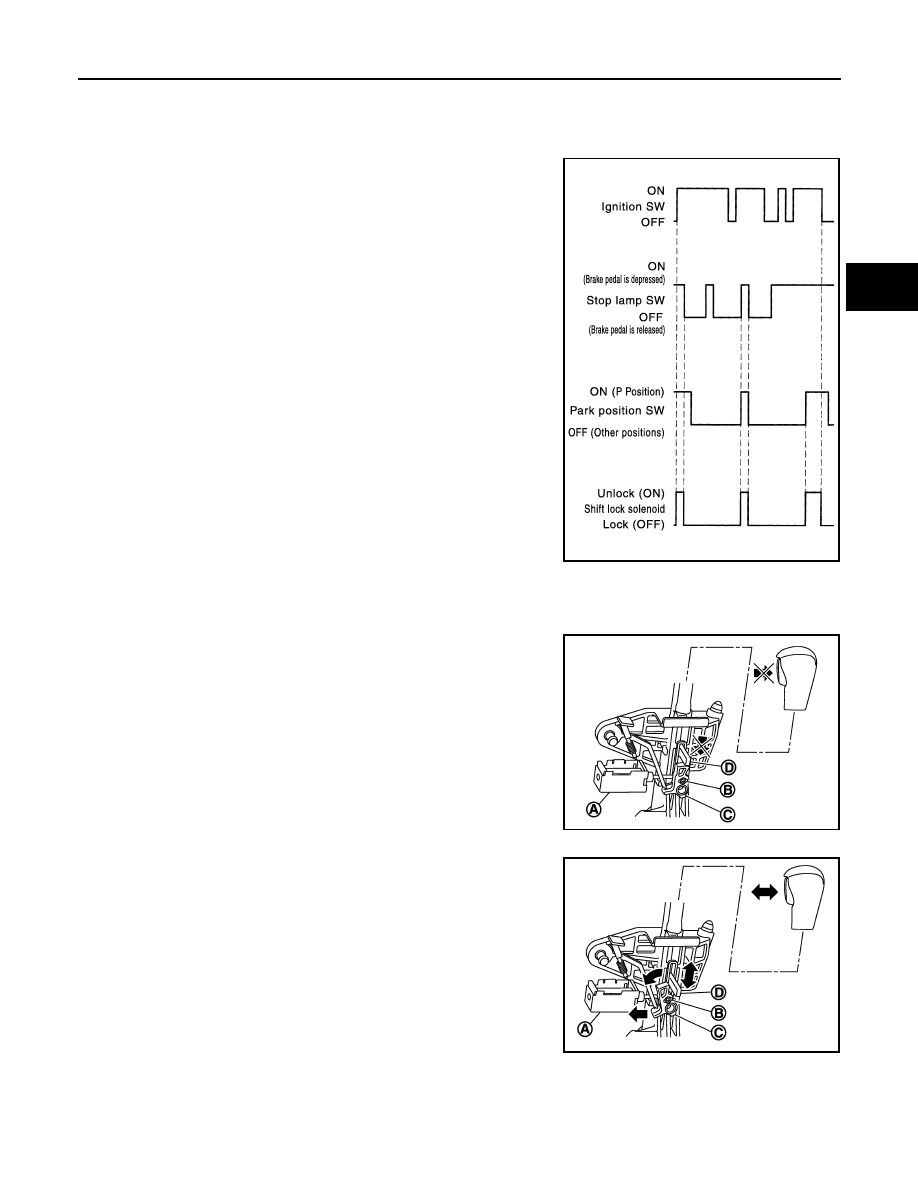содержание .. 1418 1419 1420 1421 ..
Nissan Murano Z51. Manual - part 1420

SHIFT LOCK SYSTEM
TM-31
< SYSTEM DESCRIPTION >
[CVT: RE0F09B]
C
E
F
G
H
I
J
K
L
M
A
B
TM
N
O
P
SHIFT LOCK SYSTEM
System Description
INFOID:0000000005513956
The shift lever cannot be shifted from the “P” position unless the
brake pedal is depressed while the ignition switch is set to ON. The
shift lock is unlocked by turning the shift lock solenoid ON when the
ignition switch is set to ON, the park position switch is turned ON
(selector lever is in “P” position), and the stop lamp switch is turned
ON (brake pedal is depressed) as shown in the operation chart in the
figure. Therefore, the shift lock solenoid receives no ON signal and
the shift lock remains locked if all of the above conditions are not ful-
filled. (However, selector operation is allowed if the shift lock release
button is pressed.)
SHIFT LOCK OPERATION AT “P” POSITION
When Brake Pedal Is Not Depressed (No Selector Operation Allowed)
The shift lock solenoid (A) is turned OFF (not energized) and the
solenoid rod (B) is extended with the spring when the brake pedal is
not depressed (no selector operation allowed) with the ignition
switch ON.
The connecting lock lever (C) is located at the position shown in the
figure when the solenoid rod is extended. It prevents the movement
of the detent rod (D). For these reasons, the selector lever cannot be
shifted from the “P” position.
When Brake Pedal Is Depressed (Shift Operation Allowed)
The shift lock solenoid (A) is turned ON (energized) when the brake
pedal is depressed with the ignition switch ON. The solenoid rod (B)
is compressed by the electromagnetic force. The connecting lock
lever (C) rotates when the solenoid is activated. Therefore, the
detent rod (D) can be moved. For these reasons, the selector lever
can be shifted to other positions.
“P” POSITION HOLD MECHANISM (IGNITION SWITCH LOCK)
JPDIA0624GB
JPDIA0612ZZ
JPDIA0613ZZ